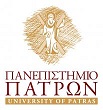Neuroengineering
Brain Connectivity, Brain Machine Interface (BMI)
 One of the current research activities of Biosignal LAb is focused on Mapping Brain Connectivity through the development of advanced methods of estimating multi‐ scale cortical brain activity (SUA ‐ MUA ‐ LFP ‐ EEG – ECoG) and communication among neuronal assemblies, which are important for understanding the complex dynamics across different organized areas of the brain. Our studies of interactions (i.e. in the form of coherence, statistical interdependencies, mutual information, linear and nonlinear phase synchronization analysis, partial coherence and directed transfer function) among neuronal ensembles of different areas have allowed us to determine the strength and direction of information flow across these brain regions.
One of the current research activities of Biosignal LAb is focused on Mapping Brain Connectivity through the development of advanced methods of estimating multi‐ scale cortical brain activity (SUA ‐ MUA ‐ LFP ‐ EEG – ECoG) and communication among neuronal assemblies, which are important for understanding the complex dynamics across different organized areas of the brain. Our studies of interactions (i.e. in the form of coherence, statistical interdependencies, mutual information, linear and nonlinear phase synchronization analysis, partial coherence and directed transfer function) among neuronal ensembles of different areas have allowed us to determine the strength and direction of information flow across these brain regions.
New experimental and computational techniques have been developed showing the relationship of brain signals to visual sensory, perceptual and cognitive phenomena they represent and motor actions they tend to generate. The analysis and reproduction of these brain signals can be used to diagnose or monitor patients with acute or chronic neurological disorders and assist patients with neuromuscular deficits to express their thought and will. This activity requires the installation of a communication technology between machine and brain (Brain‐ MachineInterface) that accomplishes the measurement of brain signals and interprets them to their use for supporting people with disabilities and for other clinical applications and therapeutic interventions.
Evidence from research studies suggests the existence of a shared neural substrate between imagined and executed movements and motor imagery. Such connectivity properties have been implemented in BMI research. The theoretical work and expertise of Biosignal Lab comprises linear and nonlinear methodologies in signal analysis and modeling of the underlying physiological & electrophysiological processes. To further study those connectivity patterns we’ve investigated several approaches. Computational intelligence, linear and nonlinear filter algorithms, artificial neural network (ANN) applications such as multilayered feedforward and recurrent neural networks, support vector machines, self‐ organizing maps, fuzzy‐ logic,etc and various techniques of statistical signal processing are only some of the tools explored and employed for biosignal analysis purposes. Another approach is based on phase dynamics modeling of coupled nonlinear oscillator which allows the quantification of coupling strength, directionality and coupling delays from time series. Furthermore, Biosignal Lab provides different data preprocessing methodologies for denoising as well and artifact removal techniques, which are very useful in the case of the usually heavily contaminated experimentally recorded biosignals.
Bioinformatics
Gene Regulatory Networks, Computational Proteomics, Micro-Array Image Analysis
 Another growing field of applications of our computational methodologies is Systems Biology and Bioinformatics, where methods and techniques of computational intelligence and more specifically neuronal networks have been used for (1) the investigation of a small number of genes and regulatory gene expression and protein dynamics in the framework of complex networks of interacting genes and gene products, (2) the development of quantitative biology, via the measurement of biological molecular quantities that determine the activity of the above networks, e.g. in terms of amount of gene expression, concentration and action of proteins, and their involvement in metabolic pathways.
Another growing field of applications of our computational methodologies is Systems Biology and Bioinformatics, where methods and techniques of computational intelligence and more specifically neuronal networks have been used for (1) the investigation of a small number of genes and regulatory gene expression and protein dynamics in the framework of complex networks of interacting genes and gene products, (2) the development of quantitative biology, via the measurement of biological molecular quantities that determine the activity of the above networks, e.g. in terms of amount of gene expression, concentration and action of proteins, and their involvement in metabolic pathways.
With the advent of microarrays, it is possible to obtain large amounts of gene expression data – which provide a picture of the transcriptional activity of genes in an organism. Microarray technology makes use of the sequence resources created by the genome projects and other sequencing efforts to answer the question, what genes are expressed in a particular cell type or organism, at a particular time, under particular conditions. For instance, they allow comparison of gene expression between normal and disease (e.g. cancerous) cells.
Advanced microarray data analysis could be split into three mains tasks:
- Clustering (grouping genes based on their expression patterns, in order to infer functional classes of non-annotated genes)
- Classification (diagnostic categorization of cancer versus non-cancer tissues, discrimination among different subtypes of tumors, as well as drug response prediction or cancer prognosis)
- Gene networks reconstruction (Gene regulatory networks (GRNs) are the on-off switches and rheostats of a cell operating at the gene level. They dynamically orchestrate the level of expression for each gene in the genome by controlling whether and how vigorously that gene will be transcribed into RNA)
We have expertise in applying pattern recognition techniques in high-level gene expression analysis, including self-organizing maps, support vector machines, k-means, hierarchical clustering, bayesian as well as other statistical methods. The methods developed address the problem of integrating supervised information and automatically detect the optimal number of clusters, as well as improving the classification performance in the case of healthy/disease tissue discrimination or discrimination of tissues of different disease subtypes using intelligent supervised learning techniques. These include all the tasks in a classic classification problem, ranging from data filtering and normalization, to dimensionality reduction, classifier building and evaluation.
Past projects
Laser Speckle Imaging
Laser speckle imaging is a method proposed by Fercher and Briers 20 years ago. Mainly used in cerebral blood flow imaging, a coherent light beam illuminates a region of the skull, is then scattered by the moving blood cells, and captured by a CCD camera. When the intensity fluctuations of the speckle pattern thus created are integrated over time, the speckles show increased blurring, and it is possible to deduce information about the motion of the scattering particles. The level of speckle blurring, the speckle contrast is defined in terms of the standard deviation and mean of the local spatial speckle intensity fluctuations. Our lab develops methods for further improving the temporal and spatial resolution of speckles images.
Modeling of Biological Systems: Mathematical Models of Cardiac Arrhythmias
We developed a two-dimensional ventricular tissue model in order to probe the determinants of electrocardiographic (ECG) morphology during acute and chronic ischemia. Hyperkalemia was simulated by step changes in [K+]out, while acidosis was induced by reducing Na+ and Ca2+ conductances. Hypoxia was introduced by its effect on potassium activity. During the initial moments of ischemia, ECG changes were characterized by increases in QRS amplitude and ST segment shortening, followed in the advanced phase by ST baseline elevation, T conformation changes, widening of the QRS and significant decreases in QRS amplitude in spite of an enlarged Q. During each phase, potential proarrhythmic mechanisms were investigated. The presence of unexcitable regions of simulated myocardial infarction led to polymorphic ECG. We also observed a nonuniform deflection of the ST segment from beat to beat. We used similar protocols to explore the responses of infarcted myocardium after impairment resolving. We found that despite irreversible uncoupling of the necrotic region, the restored normal ionic concentrations produced an isopotential ST segment and monomorphic ECG complexes, while an enlarged Q wave was still visible. In summary, these numerical experiments indicate the possibility to track in the ECG pathologic changes following the altered electrophysiology of the ischemic heart.
Analysis of Biological Time Series: Ischemic Preconditioning Effects on the HRV Response to Transient Global Ischemia
Summary The purpose of the present animal model study was to evaluate the effect of global ischemic preconditioning on the heart rate variability (HRV) response to the asphyxia insult.
Introduction Ischemic preconditioning has been used as a strategy to prevent cell death in various organs, including the brain and the heart. Investigation of the effects of ischemic preconditioning mostly employed models with reduced complexity, such as cell cultures, tissue slices or perfused organ preparations. Although such models can provide valuable insight into the protective mechanism of preconditioning, the functional (re)organization of the control mechanisms at the level of the living organism cannot be assessed.
Methods and Results The data consisted of 4 hours RR interval measurements recorded in five preconditioned and five non-preconditioned Wistar rats. Using linear (time and frequency domain) and nonlinear (approximate entropy and parameters of Poincare plots) measures, we evaluated the dynamic time course of the HRV response to the asphyxia insult and the effect of preconditioning on the autonomic neurocardiac control. Both the linear and non-linear parameters indicate a faster recovery of the baseline HRV corresponding to the preconditioned groups, though only the spectral analysis identifies a statistically significant difference between the two groups. For the preconditioned group, at about 90 min after the asphyxic insult, the autonomic neural balance (measured by LF/HF ratio) appears fully recovered. The neuroprotective effect of preconditioning translates into a faster recovery of the basal HRV and the autonomic modulation of the heart.
Information Measures of Brain Injury
Summary The overall goal of this project is to investigate brain injury following cardiac arrest by quantitative analysis of the electroencephalogram (EEG) signals based on the information theory. Our central hypothesis is that the basic property of the brain is information processing and transferring which is are thought to be through the electric pulses between neurons at the cellular level. EEG analysis can potentially provide an indicator of brain injury from cardiac arrest.
Introduction The neurological recovery after successful resuscitation from cardiac arrest largely influences the morbidity and mortality of these patients. Clinicians are expecting a real time “Brain-Holter” to monitor the physiological and functional change of the neuronal system. Quantitative EEG (qEEG) might be a potential tool in extracting such information, which is depending on the signal processing method chosen for the EEG. The conventional power spectrum analysis, parametric description of EEG, recent cepstral distance and entropy measure have shown some success. However, these indicators can’t provide the interaction information and its change across the cerebral cortex before, during and after the CA injury. In this project, we proposed three information theory based methods to analysis the EEG signal of brain injury following the cardiac arrest: (a) nonextensive entropy measure of EEG of brain injury following CA; (b) interactions evolution across the cerebral cortex of brain following CA injury based on mutual information measure.
Methods & Results Nonextensive entropy measure of EEG of brain injury following CA. Based on the hypothesis of long-term interactions and memory in neurological system, we induced the time dependent nonextensive entropy (TDE) to measure the EEG evolution of graded asphyxic brain injury. The nonextensive entropy postulated by C. Tsallis was defined with a non-logarithm formalism; our preliminary experimental results of TDE evidently show the difference between 3 and 5 min asphyxia
 BMBS
BMBS J. Hopkins University
J. Hopkins University Nat. Univ. Singapore
Nat. Univ. Singapore School of Medicine
School of Medicine Sinapse Institute
Sinapse Institute Summer School 2010
Summer School 2010 SYSGENET
SYSGENET University of Patras
University of Patras